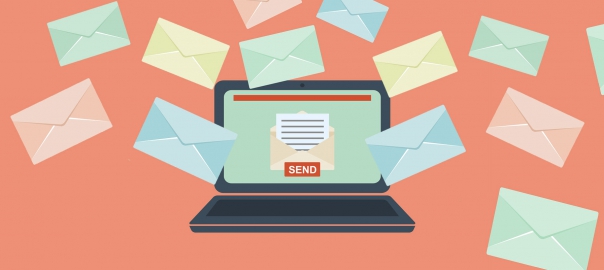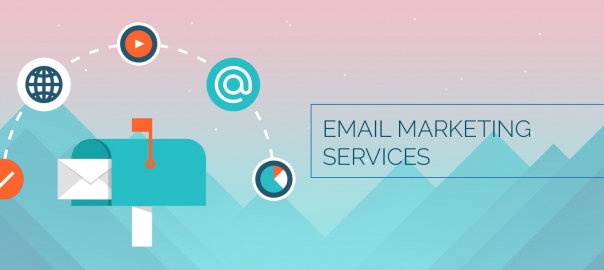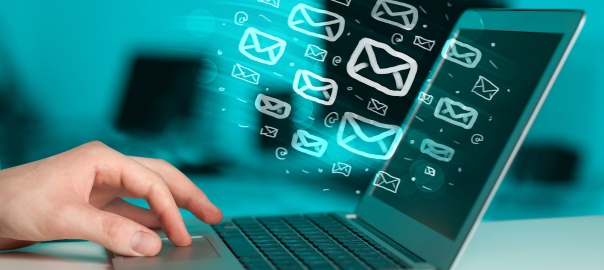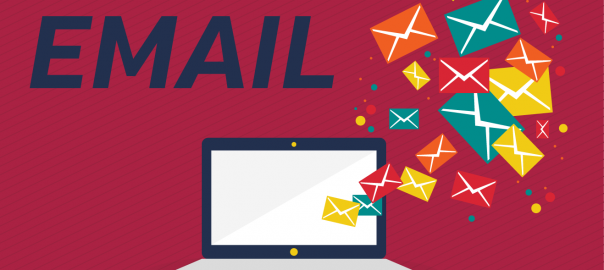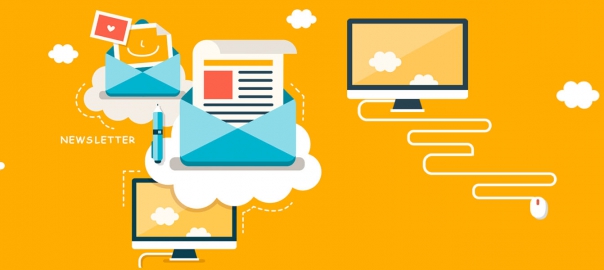
Maximizing Revenue with E-Mail
Making more money than you spend is at the foundation of every business opportunity. Before you get too caught up running your business, I hope you took the time to make a few calculations to determine whether your approach to marketing your business seemed capable of making a profit.
Although it is sure that many successful businesses start with little more than basic math, one very important calculation rarely finds its way into a business plan: the cost of acquiring enough customers for your business to survive. Your future customers aren’t going to come to your business, visit your Web site, or call you regularly unless your business is top-of-mind and you’re communicating periodically.
You have to find ways to tell people about your business, and you have to make sure that your communication efforts make more money than they cost. In this topic, we learned how to capitalize on the power of e-mail to turn your customer communication costs into more opportunities for growth and reward.
Table of Contents
- 1 - Increasing Revenue with Repeat Customers
- 2 - Understanding the value of repeat customers
- 3 - Sending multiple messages to drive revenue
- 4 - Match your content to the expected frequency
- 5 - Saving time with e-mail follow-up
- 6 - Lowering Your Costs
- 7 - Gaining a healthy perspective on your costs
- 8 - Figuring out the cost to obtain a customer
- 9 - Lowering your acquisition costs through e-mail
Increasing Revenue with Repeat Customers
You don’t have to be in business too long before you recognize that repeat customer is important. If you’ve been in business for a while, you might even know the average number of times a customer repeats and the total value of the average loyal customer over time.
Staying in front of your customers with valuable periodic e-mails is probably one of the best things you can do to drive loyalty, repeat sales, and referrals. Repeat customers are more likely than cold prospects — people who are totally unaware of your business — to make immediate purchases in response to a single message.
Customers who are familiar with your business have a history with you, and that makes up for a lot of the communications you would have to send to tell a cold prospect why your products or services are worth paying for.
Understanding the value of repeat customers
Repeat customers are not only easier to obtain than first-time customers, but it’s also much more profitable to do business with repeat customers than with cold prospects.
Here’s how repeat customers can help your business grow:
The cost to obtain a customer
For example, suppose you open a restaurant and you want to sell 100 plates of food per day. Getting strangers to come for lunch takes a lot of communication. Here are some of the costs you might incur when getting the word out:
- A sign for the side of your building
- A Web site, blog, and social media presence
- Online advertising and search engine marketing
- Social media coupons
- Search engine optimization
After spending so much money on awareness, the first 100 people to buy lunch for $10 represents a loss to the business if you spend more than $1,000 on awareness.
Base profit
Your base profit is the amount of money left over after you pay all your expenses. Base profit grows incrementally as the number of profitable purchases increase.
Profit from increased purchases
Profits increase over and above base profits after your fixed costs are covered, and each additional purchase results in a lower percentage of revenue allocated to fixed costs. For example, say that your rent is $1,000 per month and that $10 from each purchase pays the rent. After 100 purchases, your $10 represents additional profits. Repeat buyers also spend more money on the average purchase than first-time customers.
Profit from reduced operating costs
When repeat customers grow more familiar with your business, they don’t require as much hand-holding as new customers. For example, new customers might need to call tech support frequently to use your products effectively. After they become familiar with your products, though, you won’t need to field as many phone calls to support repeat purchases.
Profit from referrals
The more frequently your customers interact with your business and your products and services, the more likely they are to share their experiences with their peers. Referrals are a lot like repeat customers because when the referred customer trusts the source of the referral, you generally don’t need to spend as much time or money convincing the referral to make a purchase.
Profit from price premiums
Competing on price is a bane for some small businesses. Repeat customers who trust you and become comfortable with frequent purchases are not as willing as first-time customers to move their business to your competitors when your prices are a little higher. Higher prices shouldn’t be used to reward loyalty, but you can use price premiums as a way to offset the costs of rewarding loyalty. Lots of repeat customers will pay more to have special privileges.
Sending multiple messages to drive revenue
Communicating with prospective customers is always somewhat of a numbers game because even your best prospects and repeat customers aren’t ready to make an immediate purchase every time you contact them. A successfully delivered marketing message usually reaches people who fall in one of three categories.
Immediate purchasers
The smallest slice represents immediate purchasers. Building a marketing strategy based on a single message, or one-time touch, to go after cold prospects in hopes of immediate purchases usually results in a loss or a small return on investment (ROI). Sometimes, immediate purchases happen just because you delivered your message at the right place and at the right time. A single message that results in an immediate purchase usually means that the prospect has already done some research or is otherwise familiar with you or the products and services you sell.
Interested prospects
A second portion of the pie represents prospects who show interest but aren’t ready to make a purchase immediately. Interested prospects are unlikely to return for these reasons:
- Need time for more research or to compare products
- Waiting for money to become available
- No trust built yet for you or your business
- A similar recent purchase
Uninterested people
The rest of the pie represents people who aren’t interested at all in your message. There will always be people who are not at all interested in your products or services for one reason or another. Even the best marketing strategies can’t keep you from spending a portion of your time and money needlessly contacting people who will never buy from you.
You can turn interested prospects into immediate purchasers by following up on your messages. Periodic follow-up messages can also help to turn your immediate purchasers into repeat purchasers
Here’s how the three categories of customers break down:
Immediate purchasers
The second biggest slice now represents immediate purchases. Repeat messages help to build trust in you and your offers, and follow-up messages help your interested prospects with research and incentives to justify an immediate purchase.
Interested prospects
Sending additional messages to interested prospects keeps your business top-of-mind when they are ready to buy. Sending additional messages to customers who have already made a purchase also helps keep them interested in making future repeat purchases.
Uninterested people
The third slice of the pie represents the prospects who are still not interested in your messages or your repeat messages. You might be tempted to continue sending messages to prospects who never seem interested, but you’re better off focusing your marketing dollars on messages that target the most likely buyers. If your messages always result in an extraordinary lack of interest, you need to change your message or your audience.
Match your content to the expected frequency
Some types of content have a built-in expectation of frequency that you should adhere to. For example, the weather is basically a daily occurrence, so sending a daily e-mail with weather updates makes more sense than sending a monthly weather update. People are less likely to open your e-mails all the time if the content doesn’t match the frequency. When it comes to asking for a purchase decision, you need to adjust the frequency of your e-mails according to the expected frequency of purchases. For example:
- If your average customer makes a purchase once per month, a monthly email asking for a purchase makes sense.
- If your average customer makes a purchase once every two years, asking for a purchase every month will probably drive your customers to unsubscribe, so you’ll need to come up with other content that is once-a-month appropriate if you want to send monthly e-mails.
Make your messages memorable
Most marketing messages are easily forgotten by consumers. If you can’t connect your e-mail messages to a prior relationship, your prospect might feel that your follow-up messages are junk mail. Your e-mails will generally be more memorable when you consistently remind your prospects that they know you. For example, send follow-ups in these situations:
- Within 24 hours of the very first contact if you met the prospect in person
- A welcome e-mail when your prospect signs up for your e-mail list online
Be consistent
Setting your audience’s expectations and sending e-mail according to your promised frequency plan helps to ensure that your messages aren’t overwhelming:
- Periodically remind all your prospects how they came to be subscribed to your list and what they can expect to receive going forward.
- Don’t let too much time go between communications. Once monthly is a good minimum as long as your content is relevant.
- Remain consistent with your timing. For example, if you choose to send an email every Friday, make sure you always send it on Friday at the same time.
Make your e-mails valuable
After you capture the attention and interest of your prospects, you generally have one or two chances to impress them before they decide whether they want more of your communications. Before you send followup e-mails, ask yourself what your prospect is likely to find valuable. Keep these points in mind:
- Send only the information your prospect requested.
- Keep your messages concise and easy to scan.
- Analyze your message feedback and make changes quickly to match your prospects’ interests.
- Include information in your e-mails that is valuable to prospects even if they don’t make an immediate purchase.
Saving time with e-mail follow-up
Another way that e-mail helps to drive revenue is by making follow-up more time efficient. For example, sending a monthly e-mail newsletter takes the same amount of time and effort whether you send it to 100, 1,000, or 10,000 people.
Adding prospective customers to your e-mail database over time can amount to a lot of additional follow-ups and repeat messages that you would otherwise be unable to handle by using more traditional forms of communication. And, e-mail can be automated and personalized on-the-fly to make the communications more valuable than running generic ads for the masses.
Lowering Your Costs
Following up on your messages improves your chances of making more money over time, but only if your messages end up costing you less than the excess revenue your repeated messages generate. Your challenge is to figure out how to send the follow-up messages without spending too much money.
Determining whether your repeat message strategy is too expensive isn’t as simple as adding up all your advertising expenses or sticking to an arbitrarily reasonable percentage of your revenue for your marketing expenses. The facts are that some repeat messages raise the cost of obtaining a new customer, and some repeat messages actually lower the cost of obtaining a new customer.
Gaining a healthy perspective on your costs
When you run a business, you can easily focus too much attention on cutting costs instead of making sure that every dollar you spend signifies more than a dollar in return.
For example, you might not think that an increase in your electric bill is something to smile about. Say, though, that you own a jewelry store and you discover that a high-intensity light bulb uses more electricity but makes your jewelry sparkle more brilliantly — in that case, you might find yourself delighted to pay more for electricity. The light bulbs that cause the increase in your electric bill are responsible for more jewelry sales.
Figuring out the cost to obtain a customer
The amount of money you need to spend to get a consumer who is totally unaware of your products or services to make a purchase is called an acquisition cost. Calculating the acquisition cost for each customer is important for two reasons:
The cost per customer helps to determine whether the same amount of profit could have been obtained at a lower cost. For example, if you could obtain 120 customers by simply offering a $5 discount to each customer, spending $8.33 per customer to build a Web site isn’t as profitable as offering a discount.
The cost per customer represents a benchmark for determining whether spending more money on marketing will be more profitable. For example, if all the visitors to your Web site make an immediate purchase, it makes sense to spend more money to increase the number of visitors but only if you can drive more visitors in a cost-effective way.
Lowering your acquisition costs through e-mail
Suppose you own a retail business where most of your sales are made through weekly group seminars in your store. Someone you met at a networking event comes to your seminar and makes a purchase, netting you one sale for your networking efforts. You also signed up 10 of the 20 people you met on your newsletter list.

